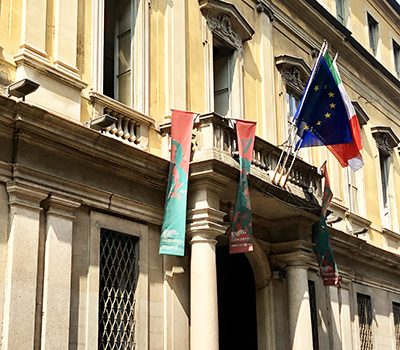History - Civic historical collections
History

Il Museum of the Risorgimento was born in 1884 from the desire of the Milanese to send a collection of testimonies relating to the Risorgimento epic to the Italian General Exhibition in Turin.
Once the exhibition closed, the materials found their first arrangement in the Hall of the Public Gardens (former Convent of the Carcanine) to be then transferred to 1896 al Castello Sforzesco. Today the Museum has headquarters in the eighteenth century Moriggia Palace, designed in 1755 by Joseph Piermarini close to the vast Brera complex.
Already the seat, in the Napoleonic era, of the Ministry of Foreign Affairs and, later, of the Ministry of War, the palace, which passed to the De Marchi family in 1900, was donated to City of Milan by the wife of the famous naturalist Marco De Marchi and on that occasion intended to museum location.
From its inception, the Museum presented itself as an institution capable of supporting the tasks of protection of memory and construction of national identity which were its role as an institute involved in research field thanks to the organization of a library and a archive, which are today among the most important in Italy for the study of recent national history.
Through a complex set of materials composed of prints, paintings, sculptures, drawings, weapons and memorabilia, the collections illustrate the period of Italian history between Napoleon Bonaparte's first campaign in Italy (1796) and the annexation of Rome to the Kingdom of Italy (1870).
The last one preparation It dates back to 2011 on the occasion of the celebrations of the 150th anniversary of the Unification of Italy. Keeping the chronological sequence intact, the exhibition itinerary, divided into 14 rooms, highlights some key episodes of nineteenth-century Milanese history and the construction of national identity in the Risorgimento: the wide offering stimulates new reflections in the public, allowing them to explore and reflect on past history and its connections with contemporary history.